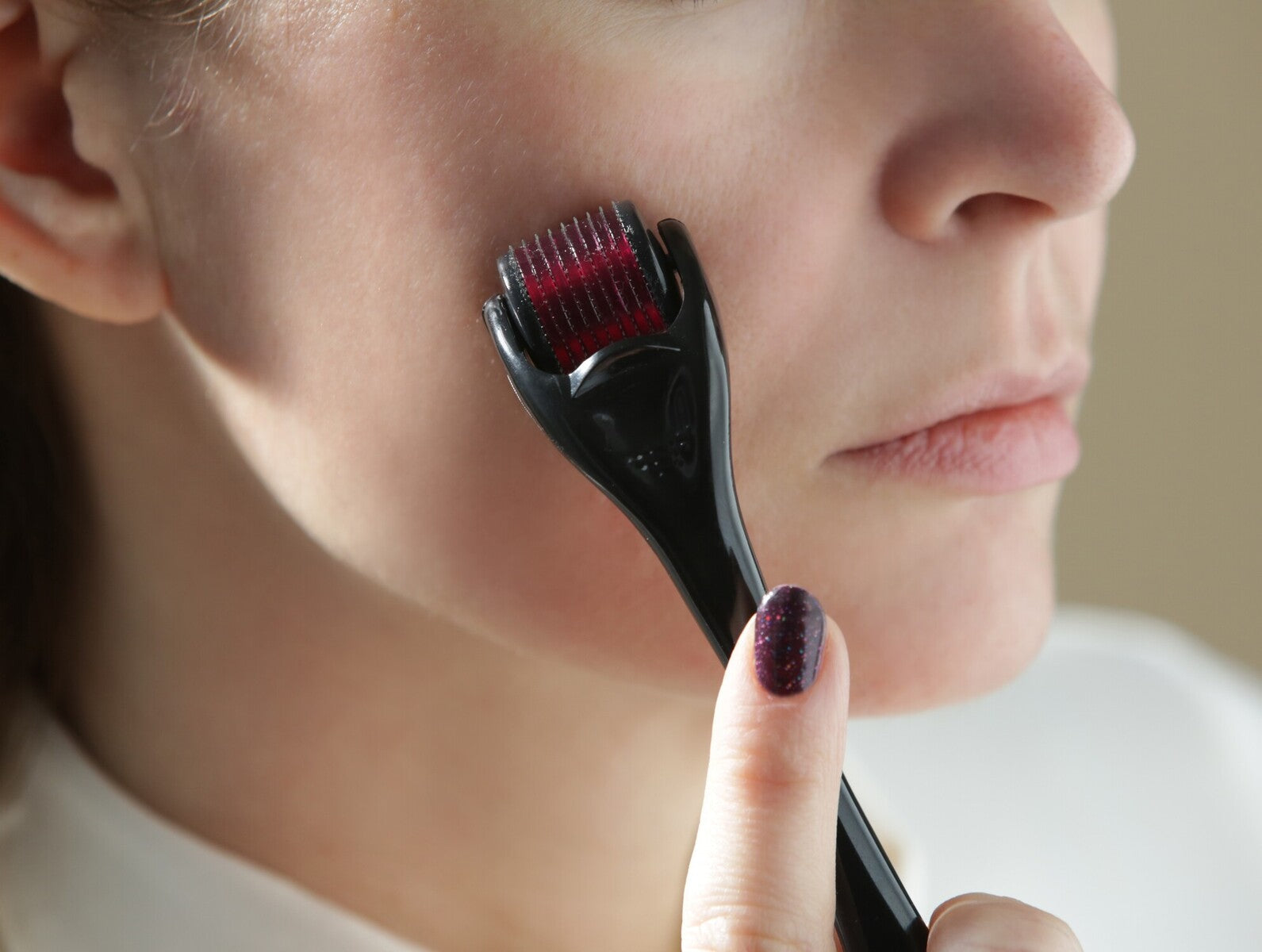Blog > All
Are Derma Rollers Safe?
Written by Our Editorial Team
6 min read
00
DAYS D00
HOURS H00
MINUTES M00
SECONDS S

Few skincare tools stir up as much curiosity as derma rollers, and it's no surprise people are asking, “Are derma rollers safe?” The short answer is yes, mostly. They can be safe when used properly, but there are risks that can turn this skincare trend into something less than skin-friendly.
That's where our at-home Micro Infusion system comes in. It takes the guesswork out and delivers smoother, brighter skin without the worry. In this article, we're diving into everything you need to know about derma roller safety, including needle sizes, materials, and why we believe Micro Infusion is the smarter choice.
What this article covers:
From our experience in the skincare world, derma rollers can be safe, but only when used with care and the right technique. These tiny-needled tools work by creating micro-injuries in the skin to stimulate collagen production and enhance absorption of your favorite serums.
When done correctly, this can lead to smoother, firmer skin. However, there are real risks involved, and results can be inconsistent. Pressing too hard, rolling over active breakouts, or using a device that hasn't been sterilized can lead to inflammation, irritation, and in worse cases, infection or scarring.
We've seen how easy it is for people to accidentally overdo it or use low-quality rollers, which is why we always emphasize education and safety.
One major issue is hygiene. Cleaning a derma roller thoroughly between uses is non-negotiable. Skipping this step can turn your skincare tool into a source of bacteria.
And let's not forget technique: Rolling too aggressively or too often can damage the skin barrier instead of helping it. It's also one reason people say a derma roller hurts, especially if it's used with too much pressure or the wrong needle size.
Selecting the appropriate needle size is crucial for safety and efficacy. For at-home use, it's recommended to start with 0.25mm to 0.5mm needles. These sizes are effective for enhancing product absorption and improving skin texture without penetrating too deeply.
Larger needles, such as 1.0mm and above, should be reserved for professional treatments, as they require expert handling to avoid potential skin damage.
The material of the needles plays a significant role in the safety and durability of derma rollers. Titanium needles are known for their strength and longevity, making them suitable for multiple uses when properly sterilized.
On the other hand, stainless steel needles are sharper but tend to dull faster and are generally intended for single use.
Get the latest from Qure
Micro Infusion was designed to bring professional-level microneedling results right into your home. Thanks to its controlled depth and single-use, sterile design, it's a much safer option than traditional derma rolling.
The technology behind it significantly reduces the chances of user error, skin trauma, and contamination, making it a more reliable choice for those seeking effective and safe skincare treatments at home.
To help clarify the differences between traditional derma rolling and our Micro Infusion system, here's a side-by-side comparison:
|
Feature |
Derma Rolling |
Micro Infusion |
|
Application Technique |
Manual rolling |
Press-and-release stamping |
|
Pressure Control |
User-dependent (can be uneven) |
Pre-calibrated for consistent depth |
|
Risk Of Skin Trauma |
Higher—can drag or scratch skin |
Low |
|
Needle Sterilization |
Requires manual cleaning between uses |
Single-use, sterile design |
|
Risk Of Infection |
Moderate to high if not cleaned properly |
Very low due to sterile, disposable setup |
|
Ease Of Use |
Requires practice and caution |
Designed for easy at-home use |
|
Product Absorption |
Good |
Excellent—targets delivery with precision |
|
Material Quality |
Varies widely across brands |
Premium-grade needles (safe for all skin) |
|
Suitable For Beginners |
Less ideal |
Highly suitable |

When it comes to safety, precision, and overall skin health, micro infusion facial system simply wins. While derma rolling has been a go-to tool for years, it comes with a steep learning curve and a fair share of potential mishaps.
In our experience, uneven pressure, the temptation to reuse unsterilized rollers, and variable needle quality can all add up to less-than-stellar results—or worse, skin damage.
Our Micro Infusion system eliminates these risks with its clean, single-use design and foolproof application. Each press delivers controlled depth, minimizing trauma and maximizing results. It's smarter, safer skincare you can trust, especially if you're just starting out.
Derma rollers can be safe when used properly, but they come with risks, especially when it comes to hygiene, needle quality, and user technique. Choosing the right needle size and material is essential, and while derma rollers can deliver results, they also demand a lot of precision and care.
That's why our Micro Infusion system is the smarter, safer option for at-home skincare. It offers all the benefits of traditional microneedling with fewer risks and a lot more consistency.
Ready to treat your skin to the upgrade it deserves? Discover the Qure difference and glow on your own terms.
It's best to avoid derma rolling over active acne. Doing so can spread bacteria, increase inflammation, and worsen breakouts. Always wait until the skin is clear before beginning treatment.
It's best to avoid makeup for at least 24 hours after derma rolling. Your skin needs time to heal and breathe, and applying makeup too soon can clog pores and increase the risk of irritation or infection.
Evening is generally the best time, as your skin enters repair mode overnight. This gives it time to recover and absorb any post-treatment serums without exposure to sunlight or environmental stressors.
If you want to learn more, why not check out these articles below:
Most Popular Posts